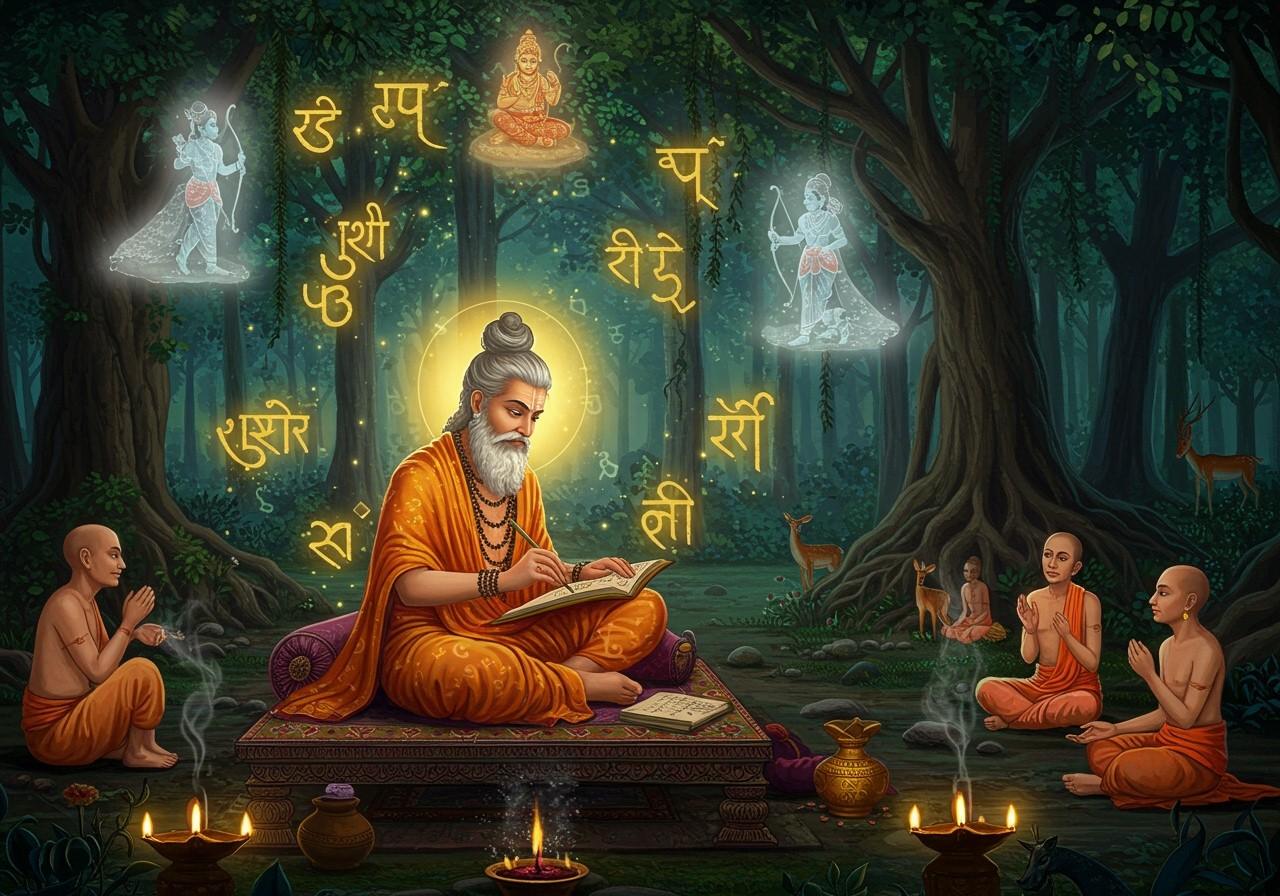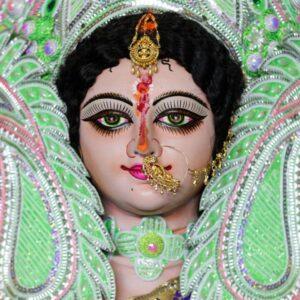
The Ramayana, a cornerstone of Indian literature, has resonated through generations, holding a revered place in Indian culture. While the tale of Rama, Sita, and Ravana is widely recognized, the origins and authorship of this ancient text remain less explored. This article delves into the life of Sage Valmiki, traditionally credited with composing the Ramayana, and examines the historical and cultural context surrounding its creation. For those seeking to deepen their connection with this epic, Poojn.in offers a wide selection of spiritual and cultural products.
The Life of Valmiki: From Ratnakara to Revered Sage
Valmiki’s life story is one of remarkable transformation. Originally known as Ratnakara, he lived as a highway robber. His encounter with the sage Narada marked a pivotal moment, leading him on a path of profound penance and devotion. Through this spiritual journey, Ratnakara underwent a metamorphosis, emerging as the revered Maharishi Valmiki.
Witnessing a hunter kill one of a pair of mating birds, Valmiki was overcome with grief for the surviving bird. This sorrow poured forth in the form of a shloka (verse), traditionally considered the first shloka in Sanskrit literature. This marked the beginning of his poetic journey. His hermitage, situated on the banks of the Ganges, evolved into a hub of learning and spirituality. Valmiki’s deep devotion to Lord Rama profoundly influenced his composition of the Ramayana.
The Composition of the Ramayana: A Timeless Epic
Comprising approximately 24,000 shlokas (verses) organized into seven Kandas (books), the Ramayana is a monumental work of classical Sanskrit literature. It stands as one of India’s two great epics, alongside the Mahabharata. The epic narrates the life of Lord Rama, starting from his birth and encompassing his exile, Sita’s abduction by Ravana, and the eventual triumph over the demon king.
Valmiki’s Ramayana explores profound themes of dharma (duty/righteousness), unwavering loyalty, and the complexities of the human condition. Its influence permeates Indian literature, art, theater, and culture. Translated into numerous languages, the Ramayana has inspired diverse regional adaptations, each offering unique interpretations.
Historical and Cultural Context of the Ramayana
While the precise date of the Ramayana’s composition remains uncertain, scholars generally place it between the 5th and 4th centuries BCE. Set in the Treta Yuga, a mythological period characterized by virtue and righteousness, the epic reflects the social and cultural values of ancient India. The Ramayana’s enduring influence has profoundly shaped the moral and ethical framework of Indian society. Festivals such as Diwali and Dussehra, rooted in events from the Ramayana, celebrate the triumph of good over evil. Characters like Rama and Sita are revered as embodiments of virtue and righteousness.
Valmiki’s Ramayana has inspired various versions and adaptations across different cultures and languages, including Sri Ramacharit Manas by Tulsidas in 1576, and a Gujarati version by poet Premanand in the 17th century. This diversity of interpretations reflects the epic’s widespread popularity and enduring influence.
Valmiki’s Influence and Legacy: The Adi Kavi’s Enduring Impact
Revered as the Adi Kavi, or first poet, Valmiki’s work laid the foundation for classical Sanskrit literature. His masterful portrayal of complex characters and exploration of profound themes continues to resonate with audiences today. The Ramayana has inspired numerous versions, adaptations, and artistic expressions, including Tulsidas’s Sri Ramacharit Manas (1576 CE) and Premanand’s 17th-century Gujarati rendition.
Valmiki’s influence transcends literature, extending into various art forms. The epic has been adapted into films, television series, and stage productions. Temples and cultural organizations dedicated to Valmiki stand as testaments to his invaluable contribution to Indian literature. His legacy endures through the timeless appeal of the Ramayana, inspiring generations and demonstrating the power of storytelling in shaping values and beliefs.
Poojn.in: Connecting You with the Ramayana’s Spiritual Essence
At Poojn.in, we recognize the profound spiritual significance of the Ramayana and Sage Valmiki. We offer a curated collection of authentic puja items to support your connection with this sacred tradition:
- Pure Copper and Brass Items: Elevate your daily puja rituals with handcrafted items like diyas, kalash, and thalis. Explore our collection of copper and brass puja items.
- Traditional Lamps (Diyas): Illuminate your aarti ceremonies with beautifully crafted diyas in various sizes and designs. Find the perfect diyas for your spiritual practices.
- Sacred Threads and Religious Accessories: Enhance your puja experience with genuine rudraksha malas, janeu (sacred threads), and other essential accessories. Discover our range of sacred threads and accessories.
- Genuine Sandalwood Products: Infuse your religious ceremonies with the fragrant aroma of pure sandalwood incense sticks, powder, and paste. Experience the purity of our sandalwood products.
- Complete Puja Kits: Simplify your worship with our comprehensive puja kits designed for specific occasions and deities. Browse our selection of complete puja kits.
Poojn.in is committed to providing high-quality, authentic puja items that honor the rich traditions of the Ramayana. Our products are carefully packaged and delivered quickly across India. Our dedicated customer service team offers expert guidance, helping you choose the right items for your spiritual needs. Shop with confidence, knowing you are acquiring genuine products that uphold the sanctity of this timeless epic.
Explore our extensive collection and enhance your spiritual journey with Poojn.in, India’s leading provider of cultural and religious goods.
Who Wrote the Ramayana?
Cultural Impact of the Ramayana
Ramayana Festivals
Symbolism and Teachings in the Ramayana
Ramayana: History, Fact, and Fiction
Ramayana Characters and Life Lessons
Dharma in the Ramayana
Ramayana: Timeless Lessons for Modern Life
Ramayana Women: Their Strength and Modern Relevance
Ramayana Bridge: Significance, Myth, or Reality
Ramayana’s Enduring Influence on Indian Culture

